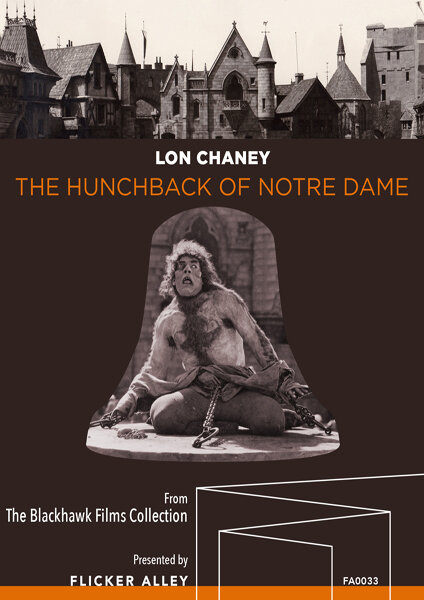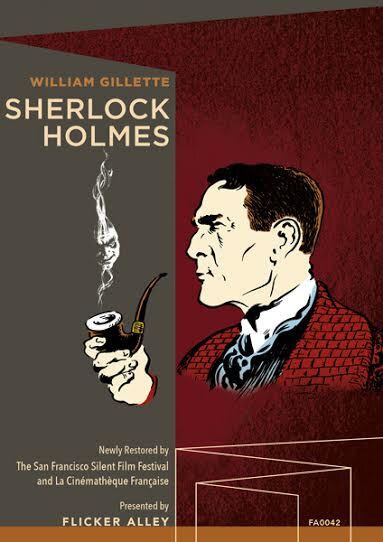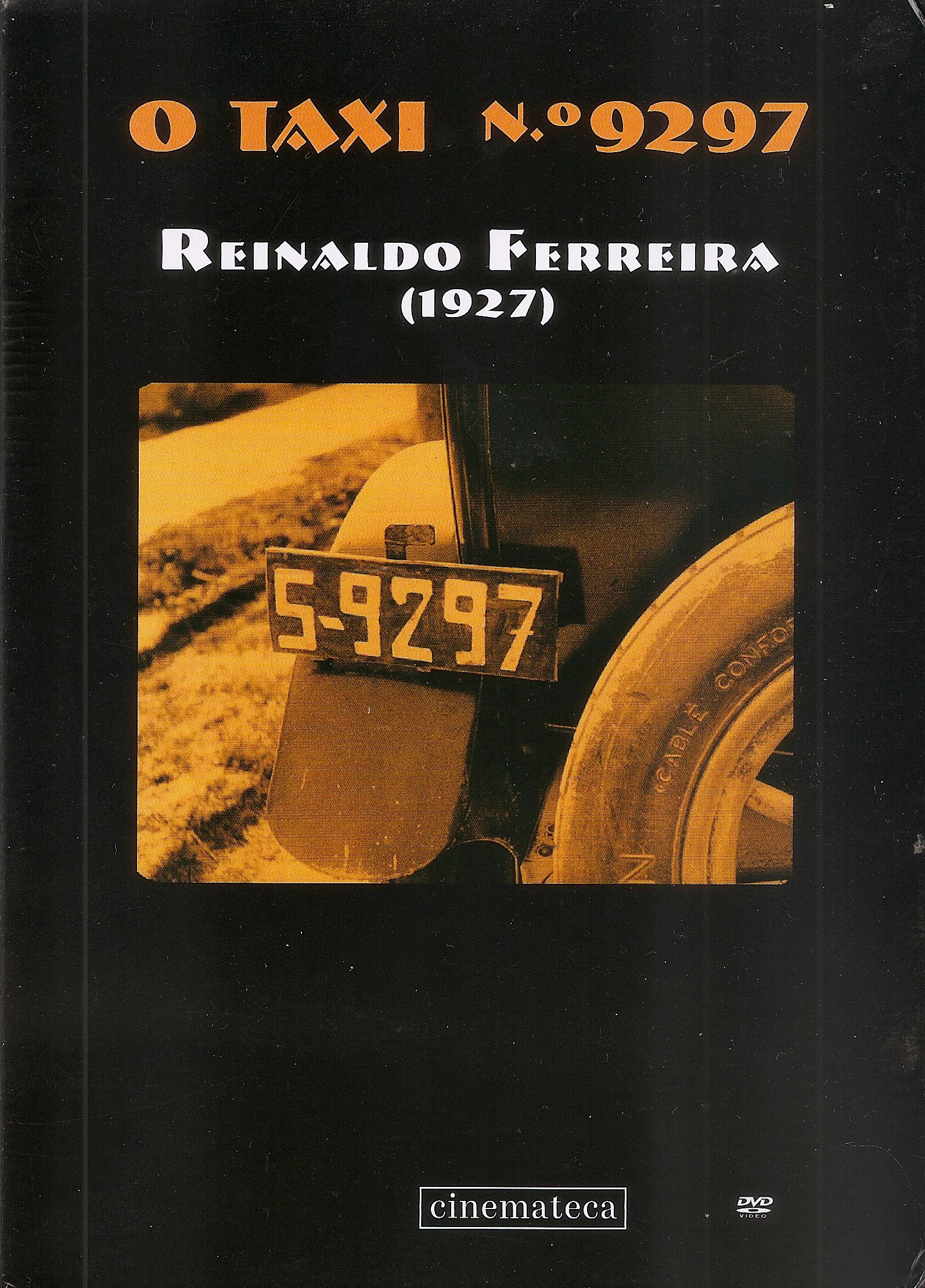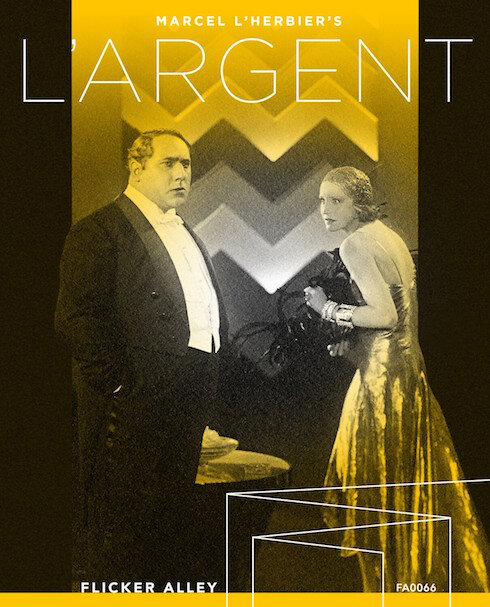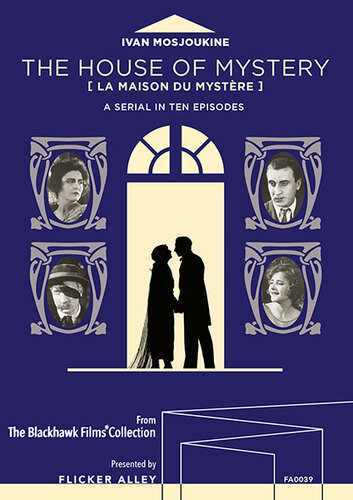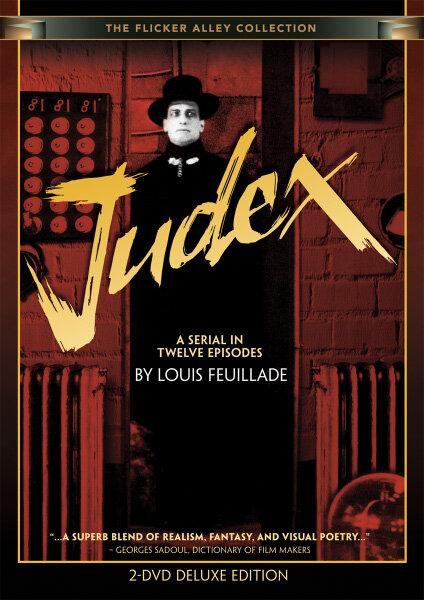GME Presents DVD Fall Flashbacks - German Expressionism -- Paul Leni and Richard Oswald
/The end of the silent era (1928 and 1929) saw an apotheosis of the art and craft of the motion picture, just as the advent of sound was overtaking the motion picture industry. At a time when film theaters were being wired for sound, studios produced “talkies” that were more stage-oriented. The height of artistic achievement in late-era silent films was visually demonstrated in films emanating from France, Germany, the United States, and the Soviet Union; these countries produced masterworks of sweeping camera movement and rapid-fire montage. GME is therefore pleased to present a group of films from these major motion picture producing countries for academic study and appreciation. Last week, GME released a late silent era film from France, LARGENT (1928), Marcel L’Herbier’s silent film swan song — a super-production of epic proportions —that combines dizzying camerawork with Soviet-era montage techniques. This week, we present two dramas directed by German émigré Paul Leni, who successfully exported to Hollywood the qualities of German expressionism in his last two films (THE MAN WHO LAUGHS, 1928 and THE LAST WARNING, 1929); simultaneously, his counterpart Richard Oswald in Germany wrote and directed DER HUND VON BASKERVILLE (1929), which is an equally expressionistic interpretation of the Sherlock Holmes story (SHERLOCK HOLMES).
THE MAN WHO LAUGHS and THE LAST WARNING were the last two films that Paul Leni directed at Universal Pictures before his untimely death at age 44. At Universal, Carl Laemmle had already produced a string of very successful historical dramas – including THE HUNCHBACK OF NOTRE DAME (1923) and THE PHANTOM OF THE OPERA (1925) – that both featured a disfigured protagonist with a kind heart, who falls in love with a beautiful woman and experiences the ability to love. These high budget productions were adapted from classic novels by such French authors as Victor Hugo and Gaston Leroux. Laemmle hoped to capitalize on them with another drama featuring human disfigurement, THE MAN WHO LAUGHS. Laemmle was impressed with Paul Leni’s direction of the German film WAXWORKS (1924), which contained a Caligari-like set for the Jack the Ripper sequence. Leni had also been a set designer in the theater for Max Reinhardt and had designed posters for expressionist films. Laemmle brought the director to the United States to helm a series of films for Universal. For the studio, Leni directed THE CAT AND THE CANARY (1927), a parody of the spooky stories currently popular on Broadway, then THE CHINESE PARROT (1927), a Charlie Chan mystery, followed by THE MAN WHO LAUGHS (1928) and finally THE LAST WARNING (1929). Universal Pictures then continued to employ a string of Germanic directors, who all made their stamp on the American horror film genre in expressionistic fashion --including Karl Freund (MURDERS IN THE RUE MORGUE, 1932), Edgar Ulmer (THE BLACK CAT, 1934), Joe May (THE INVISIBLE MAN RETURNS, 1940), and Robert Siodmak (SON OF DRACULA, 1943).
◊
THE MAN WHO LAUGHS is an historical costume drama set in the Seventeenth Century. When a proud noble refuses to kiss the hand of the despotic King James, he is executed and his son surgically disfigured. He falls in love with a blind orphan. After much palace intrigue, the couple are happily united. Unable to secure Lon Chaney for the title role, Laemmle hired Conrad Veidt of THE CABINET OF CALIGARI (1920) and WAXWORKS fame; he stars as the facially deformed protagonist in love with Lea (performed by actress Mary Philbin). Veidt once said that to portray (the deformed character) Gwynplaine “was the dream of my childhood.” Veidt and Philbin were paired again in Universal's THE LAST PERFORMANCE (1929), directed by Paul Fejos. Olga Baclanova plays Duchess Josiana; she later starred in Tod Browning’s drama of human disfigurement, FREAKS (1932).
In THE MAN WHO LAUGHS, Leni demonstrates his mastery of visual style. The film opens with an expressionistic atmospheric in Leni’s treatment of the interior scenes of the execution, and the exterior sequences of a winter storm. The crowd scenes around the castle are both grand and claustrophobic. One writer commented upon the “Leni touch” in which his directorial style “saves sets from their three-walled monotony, switches them into impressive design, and gives them tenseness and angularity.” Charles D. Hall’s set design blended Gothic and expressionistic features that he later employed for the Universal horror films of the 1930’s, including DRACULA (1931), FRANKENSTEIN (1931), MURDERS IN THE RUE MORGUE (1932), and THE INVISIBLE MAN (1933). Jack Pierce created makeup for Veidt’s perpetual grin.
This digital edition contains both a contemporary original score by students at the Berklee School of Music, designed to accompany the silent version. Most significantly, given that THE MAN WHO LAUGHS was produced as the advent of the sound film was arriving in Hollywood; the alternate track contains the original Movietone score that incorporates sound effects as well as a song, “When Love Comes Stealing” at the close of the film.
Although the film initially did not receive positive reviews, more recent assessments have elevated the stature of this film. Kevin Thomas of The Los Angeles Times claimed THE MAN WHO LAUGHS to be Leni’s masterpiece, writing that “in Leni it found its perfect director, for his bravura Expressionist style lifts this tempestuous tale above the level of tear-jerker to a genuinely stirring experience.” London Times critic David Robinson wrote in 1976 that “The highly sophisticated qualities of mise-en-scène, decoration, lighting and playing of German Expressionist cinema are effectively combined with the marvelous expertise, pace and attack of the best American films of the period; and THE MAN WHO LAUGHS proved to be one of the most vivid and dynamic films to survive from the silent cinema.”
◊
THE MAN WHO LAUGHS exerted an ongoing influence in film history. The film’s style inspired James Whale in his direction of FRANKENSTEIN (1931), THE OLD DARK HOUSE (1932), THE INVISIBLE MAN (1933), and BRIDE OF FRANKENSTEIN (1935). In Brian De Palma's THE BLACK DAHLIA (2006), when the protagonists go to the movies, they see THE MAN WHO LAUGHS. Most significantly, Veidt’s perpetual grin became the model for the Joker, nemesis of Batman, especially in the 2008 film THE DARK KNIGHT starring Heath Ledger and the 2019 film JOKER starring Joachim Phoenix.
◊
THE LAST WARNING, based on a Broadway play, is a mystery whodunit that takes place in an eerie theater. It was conceived as a follow-up to the success of THE CAT AND THE CANARY. Both these films star Laura LaPlante. The set from THE PHANTOM OF THE OPERA was re-employed for the making of THE LAST WARNING. The film is filled with horror elements --- menacing hands, masked faces, spider webs, and more, and is replete with expressionistic touches – chiaroscuro lighting, images shot at distorted angles, and a camera that tracks, pans and swings aloft throughout the theater.
THE LAST WARNING is one of the last silent films produced by Universal Studios. Made on the cusp of the sound era, the film was also released in a "part-talkie" Movietone version. The opening and closing New York City Broadway montage sequences from THE LAST WARNING were retrofitted with sound effects. This audio track has since been lost.
◊
Working in cinema between 1914 and 1951, German native Richard Oswald wrote, produced and directed silent thrillers, horror films, historical romances, romantic farces, spicy sex exposés, and, after the advent of sound, musical comedies and operettas. Oswald’s most renown film today is DIFFERENT FROM THE OTHERS (1919) for its frontal attack on Germany’s anti-sodomy laws. This movie featured Conrad Veidt (THE CABINET OF DR. CALIGARI and THE MAN WHO LAUGHS).
DER HUND VON BASKERVILLE (1929), written and directed by Richard Oswald, was the last silent film featuring the Sherlock Holmes character (SHERLOCK HOLMES). The film was shot as a silent picture, with the 6 leads hailing from six different countries. Notwithstanding the production by a small studio in Berlin (Erda-Film), DER HUND VON BASKERVILLE contains familiar components of an expressionist film -- lavish sets, chiaroscuro effects of brilliant light and deep shadows, and sweeping camerawork, both in the house interiors and on the moors. This style is evident from the very first shot of the film, which opens with a long sweeping camera pan leading from outside a house into the cozy, fireside-light living room of Lord Charles Baskerville. The typical mystery and horror elements are evident with the presence of sliding panels, secret passages, torture chambers, booby traps, and a suit of armor with moving eyes. Oswald had studied and learned from the great German masters, in particular Paul Leni, whose American productions of THE CAT AND THE CANARY and THE MAN WHO LAUGHS had enjoyed great success in Berlin.
This 1929 German version of the Sherlock Holmes story never played in the US due to the transition to sound. Movie houses no longer were in the market for silent pictures, so the film largely disappeared from public view. Fortunately, the rare, source print for this DVD edition was found in a Polish city in the basement of a Parish Priest.
The Blu-ray on this combo pack also features an earlier, 1914 version of DER HUND VON BASKERVILLE , which was also written by Richard Oswald. The sets were designed by Hermann Warm who became one of the most important art directors in German cinema; he worked on THE CABINET OF DOCTOR CALIGARI under production manager Rudolf Meinert, the director of this 1914 version. Film historian Russell Merritt has written that the 1914 film “is arguably the zaniest HUND ever produced, made while Germans and the British were killing each other in record numbers…By 1929, the now-seasoned director had calmed down considerably, and the film that emerged was not only now recognizable as Conan Doyle’s tale, but a highly effective thriller.”
For students of silent film, literature, and the stage, GME also makes available SHERLOCK HOLMES (1916), produced in the US by the Essanay Company, and directed by and starring William Gillette, who was also featured in the stage play. The film is theatrically staged, acted, and edited according to the cinematic conventions of the time. Bonus features on this digital edition include SHERLOCK HOLMES BAFFLED (US, 1900), the earliest known film to feature the Sherlock Holmes character; A CANINE SHERLOCK (US, 1912), and PIÙ FORTE CHE SHERLOCK HOLMES (Italy 1913), an Italian trick film.
◊
Related Films of Interest Available from GME:







